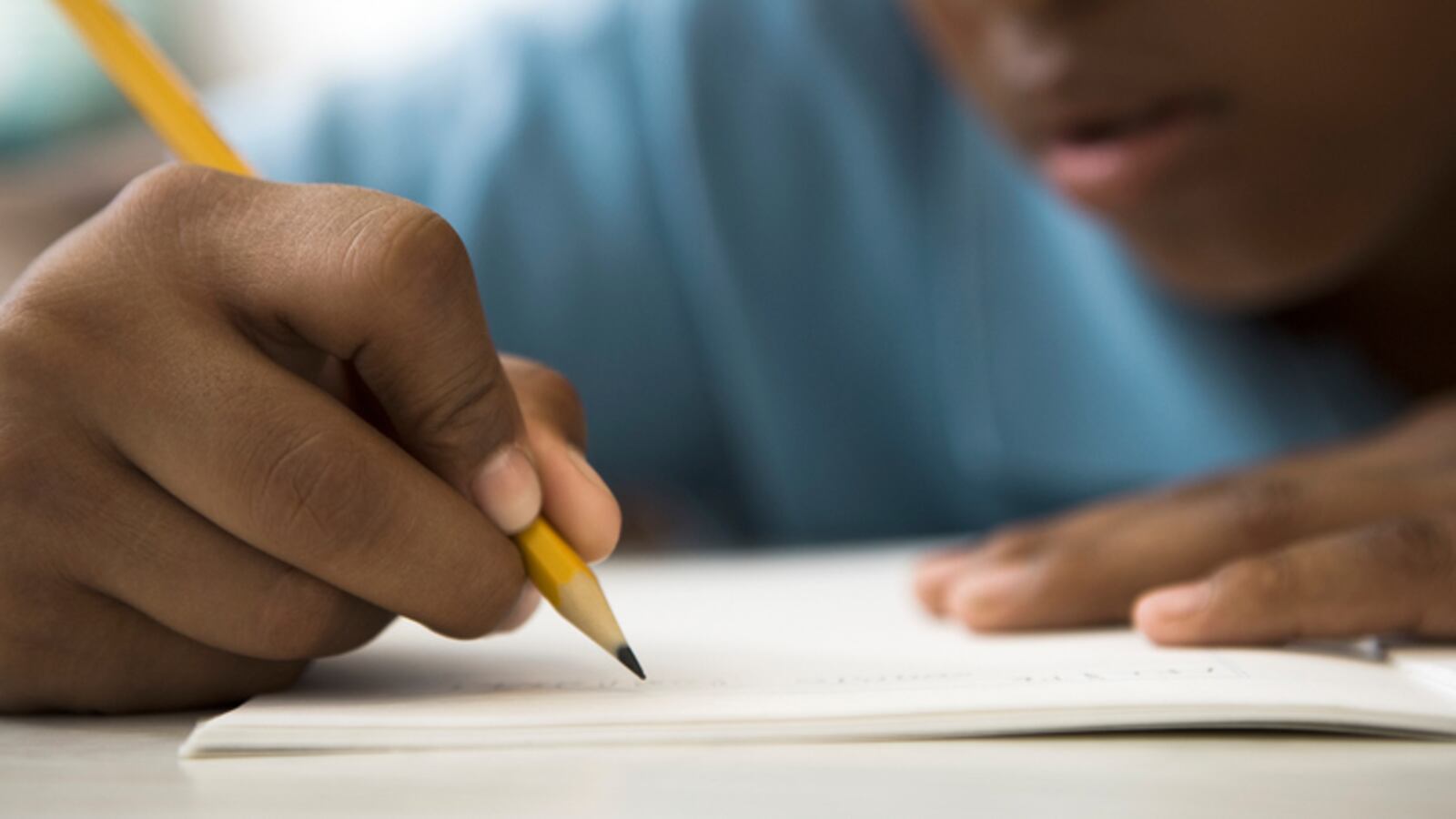Just 2 percent of black students with disabilities in Denver scored at grade-level or higher on state literacy and math tests last year. In raw numbers, that’s just 33 of the 1,641 black students with disabilities in the school district, according to Denver Public Schools data.
The percentage is similar for Latino students with disabilities: only 2.6 percent met expectations on the tests. Meanwhile, nearly 17 percent of white students with disabilities did.
Denver school officials recently revealed those shockingly low numbers and stark racial disparities as further justification for a previously proposed reorganization of the department that oversees special education. The reorganization would shrink the pool of central office staff who help school principals serve students with disabilities, and would increase the number of school psychologists and social workers.
The theory is that providing more robust mental health services in schools will allow the central office staff members who remain to shift their focus from managing behavior crises to improving academic instruction. Because of their expertise, those staff members were often tapped to help teachers deal with challenging behavior from all students, not just those with disabilities, said Eldridge Greer, who oversees special education for Denver Public Schools.
District officials also hope that increasing mental health support will reduce racial disparities in how students are disciplined. District data show black students are six times as likely to be suspended as white students, while Latino students are three times as likely.
“The biases that are in place in our society unfairly target African-American and Latino children to be controlled as a response to trauma, or as a response to readiness-to-learn (issues), instead of being provided more educational support,” Greer said.
Parents of students with disabilities have pushed back against the district’s plan to cut staff dedicated to special education. Advocates have, too.
Pam Bisceglia, executive director of Advocacy Denver, a civil rights organization that serves people with disabilities, said that while the district should be embarrassed by how poorly it’s serving students of color, she’s not sure the proposed reorganization will help.
She and others worry the district is siphoning money from special education to pay for services that will benefit all students – and that in the end, those with disabilities will lose out.
“If the district wants to have a full-time social worker and psychologist in every school, I don’t have a problem with that,” Bisceglia said. “What I have a problem with is the plan doesn’t suggest how instruction is going to look different (for students with disabilities) and how the curriculum is going to be different in terms of learning to read and do math.”
Greer said that in large part, the curriculum and strategies the district has in place are the right ones. What’s lacking, he said, is training for special education teachers, especially those who are new to the profession. Having a cadre of central office staff focused solely on academics will help, he said.
The reorganization, as detailed at a recent school board meeting, calls for cutting 45 districtwide experts who help principals serve students with disabilities – and who Greer said spent a lot of time managing behavior crises. In their place, the district would hire 15 academic specialists, eight more behavior specialists (the district already has seven), and four supervisors.
The overhaul would also ensure that all elementary schools have at least one full-time social worker or psychologist. Schools would also get money to put in place new discipline practices. The school board last year revised its discipline policy to limit suspensions and expulsions of students in preschool through third grade.
In addition, elementary schools with special programs for students with emotional needs would get $50,000 to spend on a mental health worker, teacher, or teacher’s aide.
School principals invited to discuss the reorganization with the school board said they welcomed being able to hire more social workers and psychologists. But they said they are unsure about the rest of the plan.
One principal said he relied heavily on the expert assigned to help his school serve students with disabilities. Another expressed concern about losing capable staff.
“How do we retain some of that talent so we don’t end up with a brain drain and lose all these people that have all this knowledge and expertise?” said Gilberto Muñoz, the principal at Swansea Elementary School in north Denver.
When district officials first presented the plan earlier this year, they framed it as a way to improve the academic performance of students with disabilities. Just 8 percent of Denver fourth-graders with disabilities met expectations on the state literacy test last year, compared with 44 percent of fourth-graders without disabilities.
But Greer said that when they dug into the data, they discovered the racial disparities.
“We knew there were disparities, but to see disparities as profound as the ones I shared with the board, it was important to elevate that,” he said.
Parent Sarah Young said it was courageous of the district to share such shocking data. But she said she thinks their plan to fix the disparities is lacking – and she disagrees with calling it a reorganization.
Young, who has a daughter with a learning disability, visual impairment, and epilepsy, said Denver Public Schools should call the plan what it is: cuts to special education.
“We understand you’re trying to handle behavior,” Young said, referring to the district. “But these are all vulnerable student populations, and we can’t pit them against each other. We can’t be robbing one to try to put a Band-Aid on another.”

